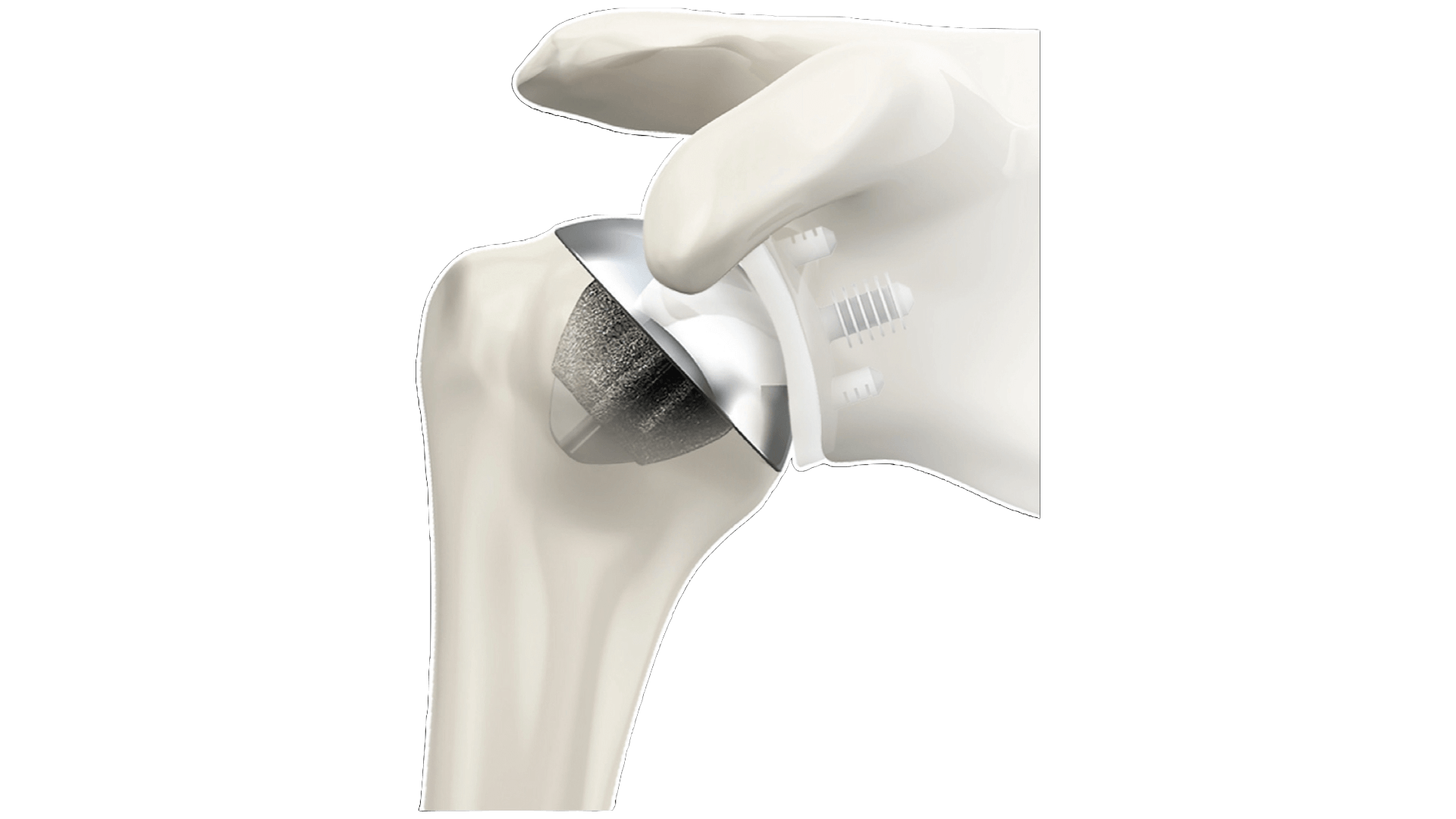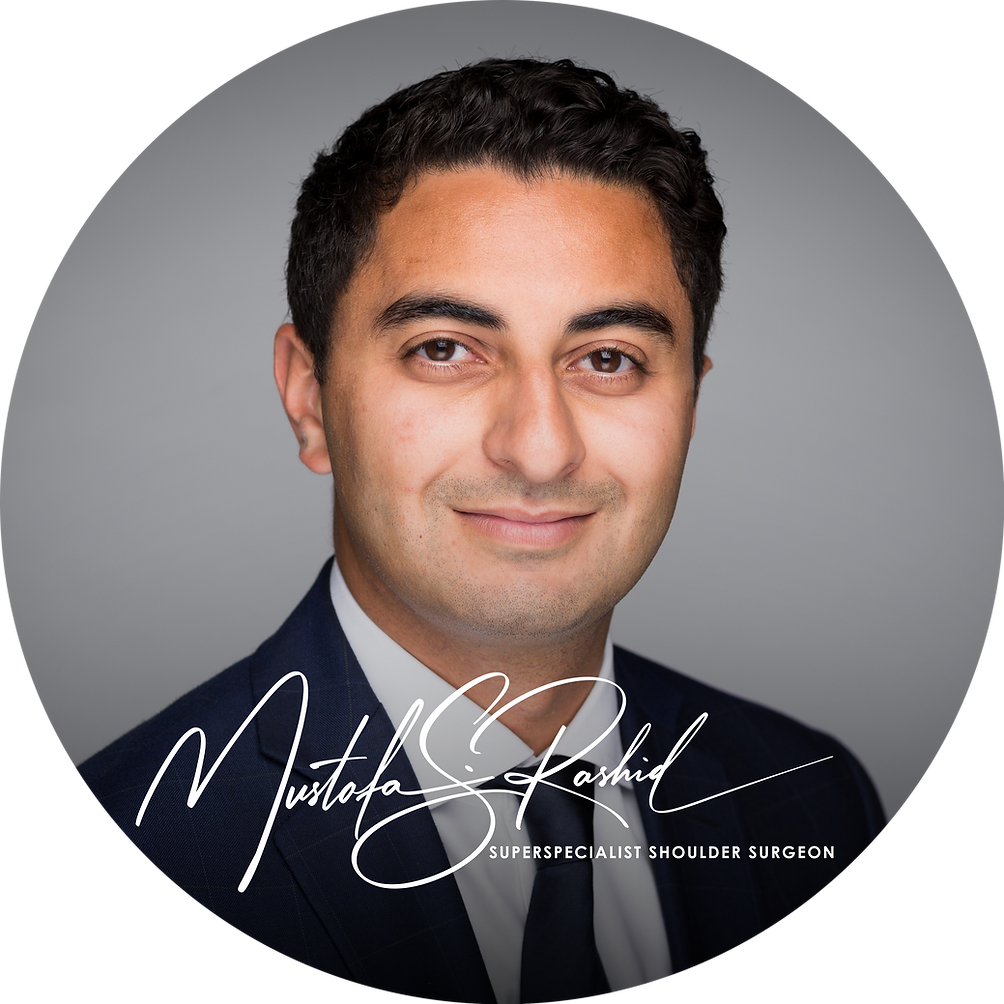Anatomic Total Shoulder Replacement

Overview
Dr. Rashid performs shoulder replacement surgery using a variety of techniques and types of implants. Anatomic means like-for-like. This type of shoulder replacement is designed at relieving pain and stiffness from an arthritic shoulder. It is done under general anaesthetic, often with nerve block (regional anaesthesia) adjunct to aid post-surgery pain management. It is a greatly successful surgery for most people that choose to have it.
Indications for Surgery
Pain, particularly at night affecting sleep quality, is often the main driver for this surgery. Significant pain that intrudes on your ability to use your shoulder for daily activities and sports should be the main reason for considering this operation. For this surgery to be successful, your own tendon and muscles have to be attached and working well. Significant stiffness may also be present.
Pre-Surgery Tests and Assessment
Before any shoulder replacement surgery, a variety of assessments and tests, such as X-rays, and a MRI scan and a CT scan are performed. Dr. Rashid uses software to create a 3D model of your shoulder, and determines the correct size and type of implant that best fits your shoulder.
Procedure Details
Under general anaesthesia, you will be placed in a sat up position. Your forearm is placed in a special arm holder to hold your arm in the correct position. After sterilisation of your arm, a 10cm skin incision is made at the front of the shoulder. The front tendon and associate bony attachment is then cut with a saw to allow access to the shoulder joint. The ball of the joint is removed using a saw. The socket is then prepared to accept the socket implant. These implants are designed to integrate into your own bone using a coating that promotes this ingrowth. After implanting the artificial socket, the artificial ball is implanted into the humerus (arm) bone. The tendon is then reattached with ultrastrong sutures.
The skin incision is closed with stitches that are absorbable and buried under the skin. Dressings and a sling are then applied.
Risks and Complications
The risks of shoulder replacement surgery are not common. These include infection, loosening of the implants, failure of the tendons around the shoulder, a fracture around the implants, and nerve injury (very rare). No implants will last forever, and they all eventually loosen. In this type of shoulder replacement, Dr Rashid uses the latest technology with a proven track record to ensure your new shoulder lasts as long as possible.
Recovery and Rehabilitation
Recovery following anatomic total shoulder replacement involves wearing your sling for 4 weeks, then slowly weaning off. Physiotherapy is helpful to ensure you regain your motion and strength. It is important to ensure the tendon that was reattached at the front of the shoulder has healed before excess movement and strengthening commences. Most people continue to improve for a year after surgery, although most of the improvement occurs in the first 6 months. Pain relief is often appreciated in the first month.
Expected Outcomes
Every patient has different goals from this type of surgery. Most people will be able to live their life, free of shoulder pain, and with a functional shoulder within 3 months. For those wishing to return to sports and more physically demanding activities, they may take more time. Most people are able to return to tennis, golf, swimming, and physical labour between 3 and 6 months after surgery. Dr. Rashid will follow your shoulder implant for many years to ensure it continues to work well over time.
About the Author

Mustafa Rashid
Dr. Mustafa Rashid is an award-winning, well published superspecialised surgeon from the UK, specialising in shoulders
